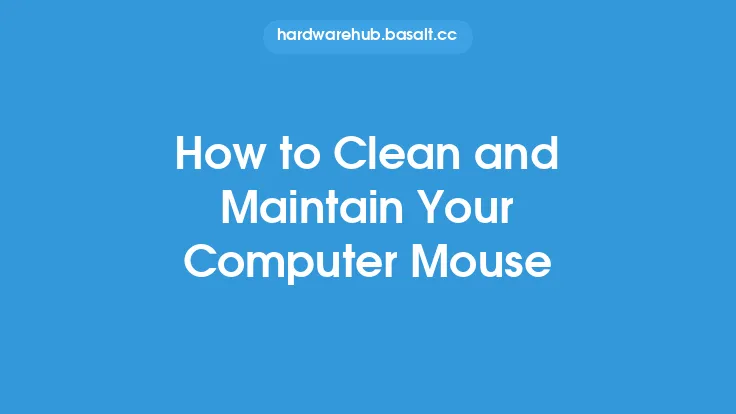Cleaning and maintaining your keyboard is essential for optimal performance, as it can help prevent damage, improve typing accuracy, and reduce the risk of electrical failures. Over time, keyboards can accumulate dust, dirt, and debris, which can cause keys to stick, malfunction, or even stop working altogether. In this article, we will provide a comprehensive guide on how to clean and maintain your keyboard, including the materials needed, step-by-step instructions, and tips for preventing future damage.
Introduction to Keyboard Cleaning
Before we dive into the cleaning process, it's essential to understand the importance of keyboard maintenance. Keyboards are prone to dust and dirt accumulation, which can cause a range of problems, from sticky keys to electrical failures. Regular cleaning can help prevent these issues and ensure your keyboard continues to function optimally. Additionally, cleaning your keyboard can also help reduce the risk of germ transmission, as keyboards can harbor bacteria, viruses, and other microorganisms.
Materials Needed for Cleaning
To clean your keyboard, you will need a few basic materials, including:
- A can of compressed air
- A soft-bristled brush or a small vacuum cleaner
- A damp cloth or a disinfectant wipe
- A keycap puller (optional)
- A cleaning solution (optional)
Step-by-Step Cleaning Instructions
To clean your keyboard, follow these step-by-step instructions:
- Turn off your keyboard and unplug it from your computer. This will prevent any accidental keystrokes or electrical shocks.
- Use compressed air to blow out any loose debris, such as dust or dirt, from between the keys and crevices. Hold the can upright and spray the air in short bursts, moving the can around the keyboard to ensure all areas are covered.
- Use a soft-bristled brush or a small vacuum cleaner to gently remove any remaining debris or dust from between the keys and crevices.
- Dampen a cloth with water, but make sure it's not soaking wet. Wipe down the keys and keyboard surface, paying particular attention to any areas with visible stains or debris buildup. Avoid getting any liquids into the openings between the keys or into the keyboard's electrical components.
- If you need to remove stubborn stains or grime, you can use a disinfectant wipe or a cleaning solution specifically designed for electronics. However, be sure to follow the manufacturer's instructions and take necessary precautions to avoid damaging your keyboard.
- Use a keycap puller to remove the keycaps, if necessary. This will give you access to the underlying switches and allow for more thorough cleaning. Be careful not to pull too hard, as you don't want to damage the switches or the keyboard's electrical components.
- Once you've finished cleaning, use compressed air to blow out any remaining moisture or debris.
Deep Cleaning and Maintenance
For more thorough cleaning and maintenance, you can perform a deep clean on your keyboard. This involves disassembling the keyboard and cleaning the individual components, such as the switches, PCB, and casing. However, this process requires more technical expertise and specialized tools, and it's not recommended for casual users.
Preventing Future Damage
To prevent future damage and maintain your keyboard's optimal performance, follow these tips:
- Clean your keyboard regularly, ideally every 1-3 months, depending on usage.
- Avoid eating or drinking near your keyboard, as crumbs and spills can cause damage.
- Use a keyboard cover or skin to protect the keys and surface from dust and debris.
- Avoid exposing your keyboard to extreme temperatures, humidity, or moisture.
- Handle your keyboard with care, avoiding drops, bumps, or other physical stress.
Conclusion
Cleaning and maintaining your keyboard is essential for optimal performance, as it can help prevent damage, improve typing accuracy, and reduce the risk of electrical failures. By following the step-by-step instructions and tips outlined in this article, you can keep your keyboard in good working condition and ensure it continues to function optimally for years to come. Remember to clean your keyboard regularly, handle it with care, and take necessary precautions to prevent future damage. With proper maintenance, your keyboard will remain a reliable and essential tool for your computing needs.





